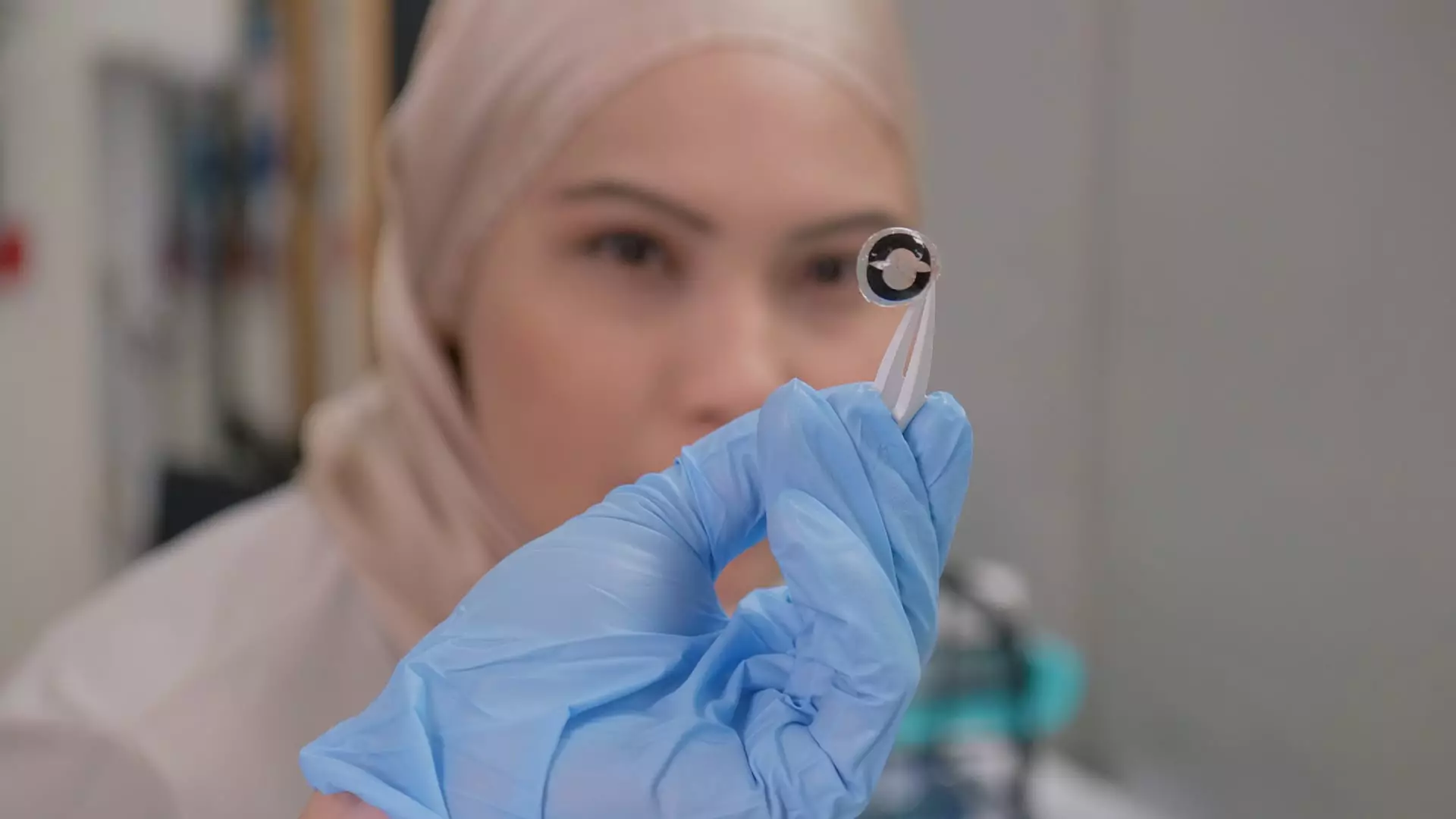Scientist Lee Seok Woo drew inspiration from a “Mission Impossible” movie scene to create his latest invention: batteries for smart contact lenses. In the movie, an agent wears contact lenses equipped with facial recognition and eye tracking capabilities, sparking Lee’s interest in turning this fictional technology into reality. With a background in battery components, Lee saw an opportunity to contribute to the field of wearable technology by developing batteries that are safe, compact, and compatible with smart contact lenses.
Understanding the need for thin and flexible batteries to power smart contact lenses, Lee and his team invented a battery that is only 0.2 mm thick – twice the thickness of a human hair. The battery can be powered using a biocompatible saline solution, eliminating the need for lithium-ion batteries with flammable materials. By coating the battery with glucose and immersing it in saline solution, the battery can be charged using a chemical method, or a conventional wire method. This innovative approach allows the battery to reach 80% of its full capacity after eight hours of chemical charging, lasting for a couple of hours during the day.
One of the most intriguing features of these batteries is their ability to be charged by tears. Lee explained that tear solution contains glucose, which can react with sodium and chloride ions in the battery to generate power. As a result, wearing the contact lens and producing tears can actually charge the battery. While the current capacity and voltage of the battery are relatively low, the team is working on improving these specifications to enable functionalities such as data storage and internet connection.
Lee envisions potential applications for smart contact lenses in the healthcare industry, particularly in monitoring glucose levels for diabetic patients. By utilizing glucose as a biofuel, the contact lenses could provide a non-invasive way for users to track their glucose levels on a daily basis. However, Lee emphasizes the importance of keeping costs low to make this technology accessible to a wider demographic.
Despite the promising capabilities of smart contact lenses powered by tears, there are still challenges to overcome. The current voltage output of the batteries is insufficient for certain applications, such as data storage and internet connectivity. Lee and his team are dedicated to enhancing the battery’s performance to enable more advanced features in the future. By collaborating with partners in the healthcare industry, they aim to leverage the potential of smart contact lenses to revolutionize remote health monitoring and diagnostics.
The development of batteries powered by tears for smart contact lenses represents a significant advancement in wearable technology. With the potential to monitor glucose levels, track eye movements, and support various applications, these innovative batteries have the power to transform how we interact with technology on a daily basis. As researchers continue to refine the technology and explore new possibilities, the future of wearable technology looks brighter than ever before.


Leave a Reply